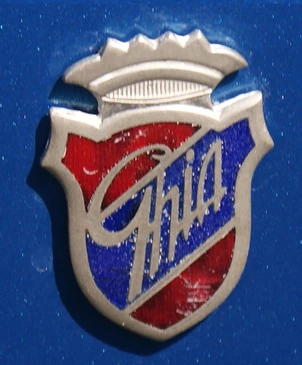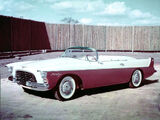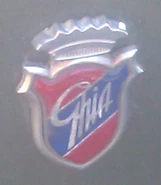
Carrozzeria Ghia SpA (established 1915 in Turin) is one of the most famous Italian automobile design and coachbuilding firms, established by Giacinto Ghia and Gariglio as Carrozzeria Ghia & Gariglio, located at 4 Corso Valentino in Turin.
History[]
Ghia initially made lightweight aluminum-bodied cars, achieving fame with the Alfa Romeo 6C 1500, winning Mille Miglia (1929). Between the world wars, Ghia designed special bodies for Alfa Romeo, Fiat, and Lancia, one of the most famous was the Fiat 508 Balilla sports coupe (1933). The factory was rebuilt at Via Tomassi Grossi, after being demolished in an air raid during World War II (1943). After Ghia's death (1944), the company was sold to Mario Boano and Giorgio Alberti. The Ghia-Aigle subsidiary was established in Aigle, Switzerland (1948).
Following differences between Boano and the company's Naples-born chief engineer and designer Luigi Segre, Boano left the company in 1953 and ownership passed to Segre in 1954. Under the leadership of Luigi Segre, the decade between 1953 and 1963 saw many foreign firms ordering Ghia designs, such as Ford (the Lincoln Futura concept car), Volkswagen (the Karmann Ghia), and Volvo (the Volvo P1800). Chrysler and its designer Virgil Exner became a close partner for 15 years, resulting in eighteen Chrysler Ghia Specials (1951–53), the K-310, the Chrysler Norseman, the Crown Imperial limousines (Jackie Kennedy, Nelson Rockefeller, and other luminaries owned one), and others. There are even a few Ghia-bodied Ferraris. Ghia also participated in the short-lived Dual-Ghia venture. Production by Ghia was always in very low numbers, giving the company's products even greater exclusivity than those of the other Italian coachbuilders.
In 1953, Boano left for Fiat, the factory moved to via Agostino da Montefeltro, and Luigi Segre took over. Ghia then bought Pietro Frua, appointing Frua as head of Ghia Design (1957–60), designing the Renault Floride. After Segres death (1963), Ghia was sold to Ramfis Trujillo (1966), who sold to Alejandro de Tomaso (1967), owner of a rival design house, who took over, but had difficulty in running Ghia profitably. In 1970, he sold his shares to the Ford Motor Company. During this transition period, Ghia had partial involvement in the De Tomaso Pantera, a high-performance, mid-engine car with a 351 cu in (5,750 cc) OHV Ford V8.
From 1973, the Ghia name became Ford's top trim-level in its mainstream model range. The trend began in Europe (Granada Ghia, Capri Ghia, Cortina Ghia, Escort Ghia, Fiesta Ghia, later Sierra Ghia, Orion Ghia, Scorpio Ghia, Mondeo Ghia, Focus Ghia) and the Brazilian Ford Del Rey Ghia but soon spread worldwide, particularly to the U.S, South American and Australian markets.
In the British market, however, the practice of using the Ghia name in such a capacity was finally phased out in 2010. The 'Titanium' name has instead replaced Ghia as the flagship trim level. The British Ford Fiesta retained the Ghia trim designation for the longest amount of time of any model; for thirty-one-and-a-half years, uninterrupted, from February 1977 to November 2008.
As of 2012 the Ghia studios produce many various concept cars under the Ford banner. However, it will also forever be linked with Ford's top-line models.
Gallery[]
-

Ford Via -

Ghia Action -

Ford Vivace -

Ford GT-70 -

Jaguar XK120 Supersonic -

Chrysler Flight Sweep II -

Chrysler Flight Sweep I -

Chrysler Dart
All items (94)
- Ford Alpe
- Ford Avant Garde
- Ford Barchetta
- Ford Brezza
- Ford Cockpit
- Ford Corrida
- Ford Fiesta Bebop
- Ford Fiesta Tuareg
- Ford Flashback
- Ford Granada Altair
- Ford GT-70
- Ford GTK
- Ford HFX Aerostar
- Ford Manx
- Ford Megastar
- Ford Megastar II
- Ford Microsport
- Ford Mustela II
- Ford Pockar
- Ford Prima
- Ford Probe I
- Ford Probe V
- Ford Quicksilver
- Ford Saetta
- Ford Saguaro
- Ford Shuttler
- Ford Super Gnat
- Ford Topaz
- Ford Trio
- Ford Urby
- Ford Via
- Ford Vignale Mustang
- Ford Vignale TSX-4
- Ford Vivace
- Ford Zag
- Ford Zig


























































































